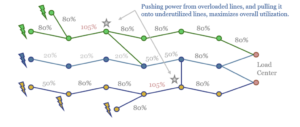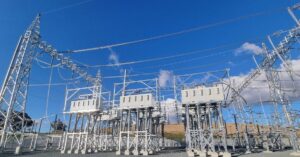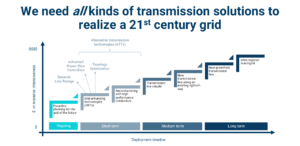
Safely optimizing power grid utilization with m-SSSCs: A case study in Colombia
September 18, 2023
Grid enhancing technologies that support optimized use of transmission grids offer huge value to utilities who need to quickly integrate renewable energy. However, there are often concerns over their impact on existing protection schemes. In this article, Pablo Macedo presents a recent study in Colombia and explains how SmartValve provides power flow control capabilities while maintaining grid stability.
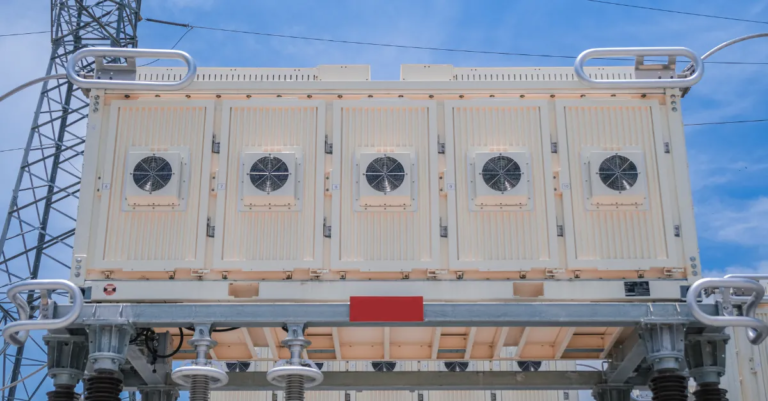
In recent years, the global power sector has been undergoing a profound transformation, driven by the increasing integration of renewable energy resources and electrification of transport, heat and industry. As more solar and wind generation capacity is added to power grids, challenges arise in efficiently transmitting this energy while maintaining grid stability. Traditional solutions involve building new infrastructure, but this approach faces limitations due to environmental concerns and spatial constraints. This has led to a growing interest in technologies that both optimize the existing grid and complement other grid investments by enabling new assets provide greater impact and more flexibility. One such technology making waves is the m-SSSC (Modular Static Synchronous Series Compensator), which paves the way forward for series–connected FACTS (Flexible Alternating Current Transmission Systems). As part of the Analytics team, I work with utilities around the world to help them smoothly integrate our m-SSSC, SmartValve™, into their grids.
Colombia faces a similar challenge to many countries across the world as it moves to integrate its abundant solar and wind resources into the grid, often in different locations that the conventional generation that is being phased out. The rapid growth of this renewable energy generation in the northern region of the country is prompting an urgent need for transmission network enhancements. The time required to build new infrastructure doesn’t align with the near-term readiness of new generation sources to connect, thus delaying the integration of renewable sources.
M-SSSCs, such as SmartValve™, offers a solution, both as a temporary and long-term measure, to optimize grid utilization and help the transmission owners manage the timely cost-efficient connection of renewables.
SmartValve operates by injecting a voltage in quadrature (90 degrees out of phase) with the line current. This injection effectively changes the net impedance of the transmission line, meaning that it can push power off overloaded lines or pull power onto underutilized lines. Unlike traditional SSSC solutions, SmartValve can adjust line reactance independently of current, providing more control over power flows. It is composed of several components, including filters, bypass and converter systems, that work together to inject reactive voltages, thus controlling the currents on the transmission line.
One of the of integrating M-SSSC into the power grid is it’s the impact on protection schemes. The injected voltage modifies the equivalent reactance of the line, potentially affecting the response of distance relays.
The Santa Marta case
This article presents a study conducted in Colombia, focusing on the Santa Marta 220 kV substation, that analyzes the impact of M-SSSC deployments on protection schemes using real-time simulations. It presents a concise overview of the research outcomes published in a collaborative paper by Smart Wires and ISA, that was featured in the Technical Works – C4 section of the XIX ERIAC – CIGRE Iberoamerican Regional Meeting 2023. The complete paper is available at this link.
To evaluate the performance of m-SSSC devices during dynamic events, this study employed a Control Hardware in the Loop (C-HIL) along with the Protection Hardware in the Loop (P-HIL) testing methodology. This approach, that integrates real-time digital simulation and physical hardware, allows to test and validate control and protection systems interactions for complex, real-world power systems. The setup is illustrated in the figure below.

The study considers a uniform three-phase fault scenario, located in the middle of the Santa Marta – Guajira 220kV line, featuring a 5-Ohm impedance and a 1.5-second duration. The results prove that m-SSSC don’t negatively affect the protection coordination scheme while preventing thermal overloads in the area where the circuit is located.
To show the benefit of m-SSSC, the study evaluated the following 3 fault scenarios:
- A base case, that doesn’t include the M-SSSC. That demonstrates the need for m-SSSC.
- A case including the m-SSSC with no function, that demonstrates how a non-adequate response to a fault of the m-SSSC devices affects the protection scheme behavior. Without the bypass being triggered in transient conditions the m-SSSC device can momentarily lose synchronization, which can lead to interference with distance protection relays.
- A case including a m-SSSC provided with bypass function, such as SmartValve, that demonstrates the benefit of this solution to mitigate thermal overloads within the circuit’s vicinity without compromising the operational efficiency of the distance protection relays.
The figure below provides a high-level representation of the simulated system’s layout.
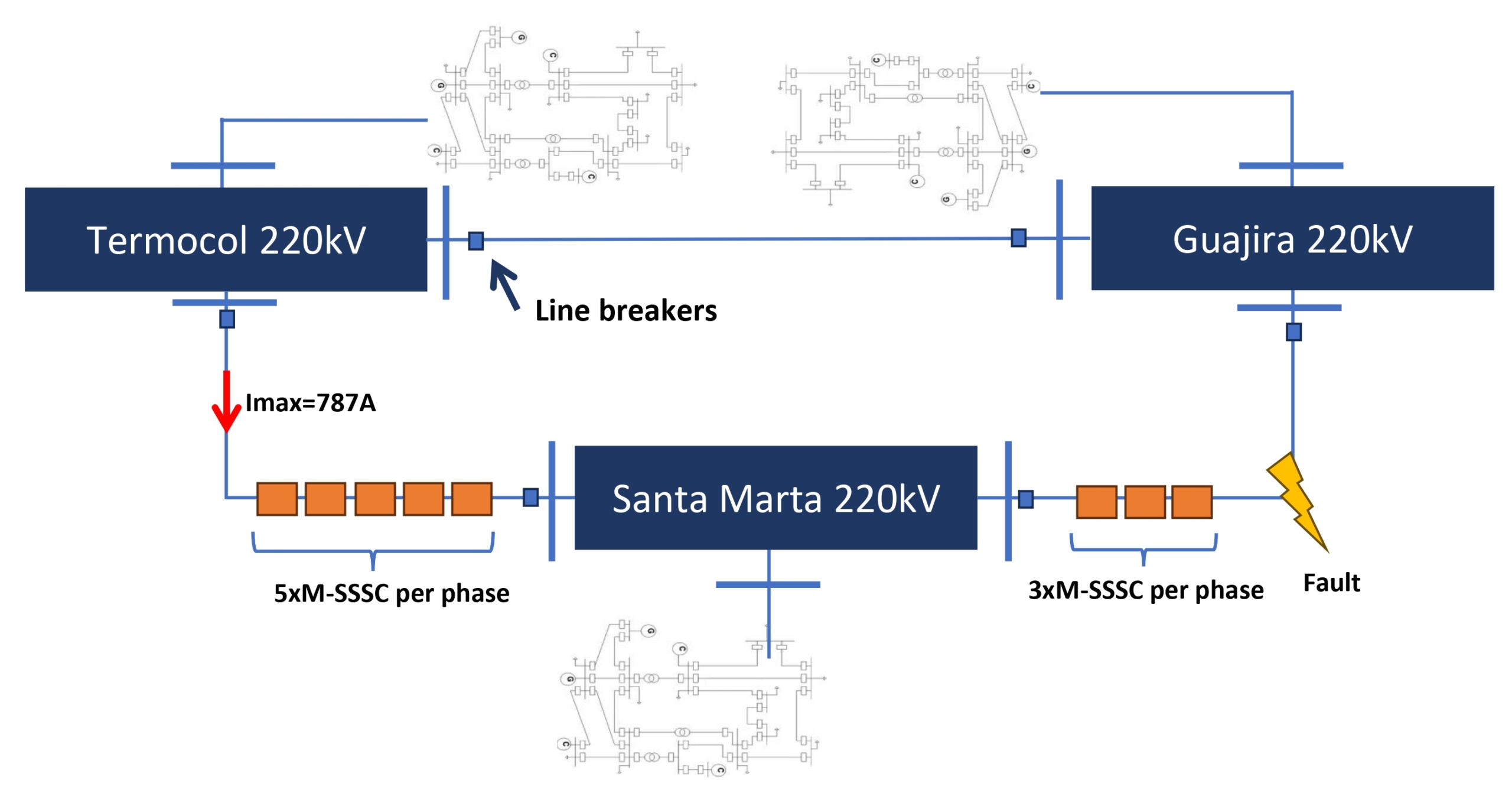
The following presents a detailed overview of the 3 cases analyzed. The plots display the three-phase voltage and current, and the RMS current measured on the line following the fault.
- Base case with no m-SSSC deployment: The fault led to a line thermal overload, demonstrating the need to “push” power off the Santa Marta-Termocol line.
- T1: during this time frame, the protection relay triggers the breakers and isolates the line. The line continues conducting current, as expected.
- T2: in this time frame the relays attempt to reclose; however, since the fault is still on (1.5-second fault duration), it triggers the breakers to open again. The line continues operating.
- Steady State: at this point, the relays won’t attempt to reclose again and at steady-state the line current remains above the line limits of 787A, i.e. the line is overloaded.
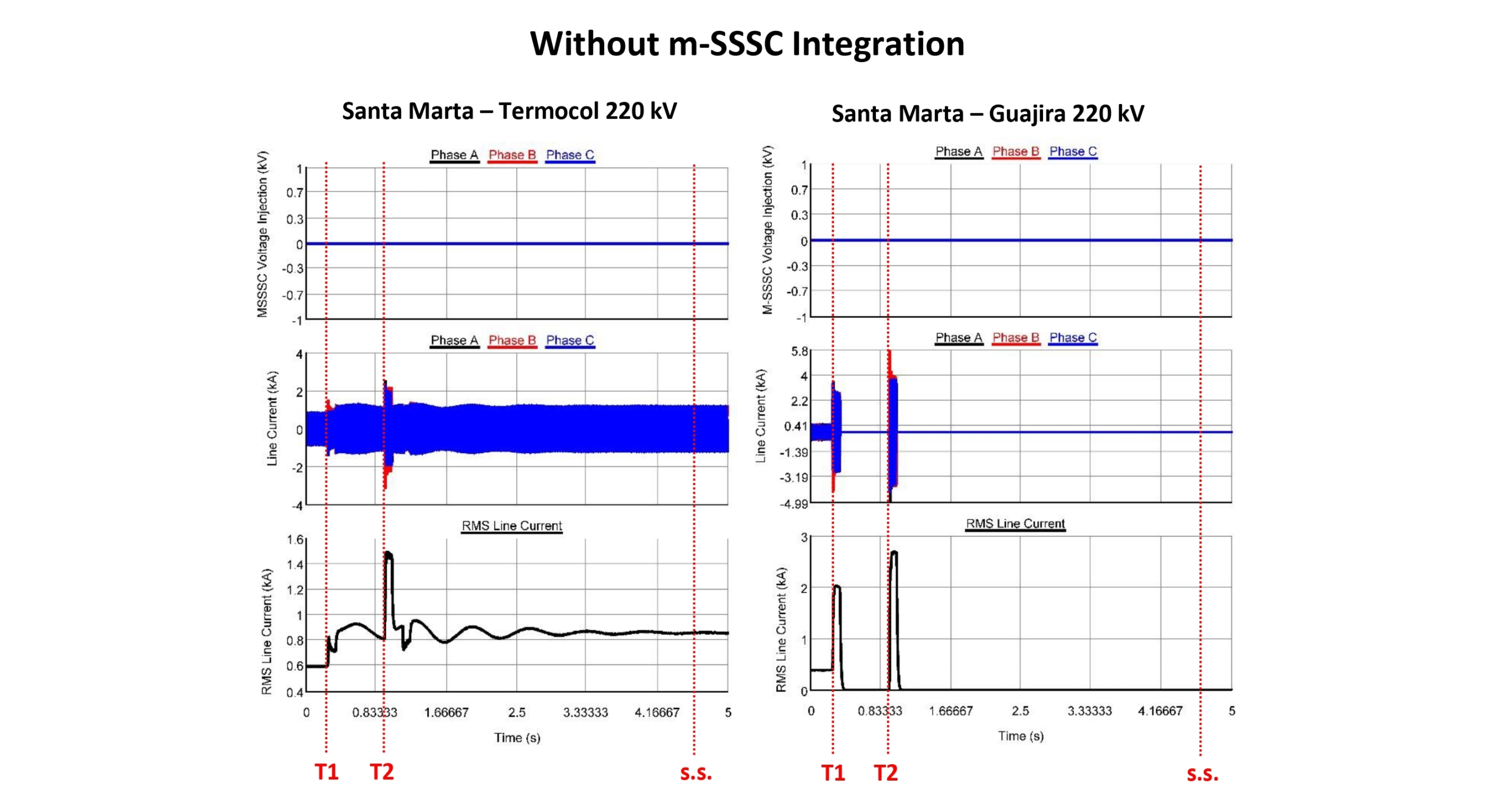
2. With m-SSSC Integration but : The m-SSSC injection affected protection schemes, however, without the bypass functionality the device will attempt to continue injecting during those transient conditions, potentially leading to grid instability.
- T1: during this time frame, the m-SSSCs on this line immediately bypass and remain in bypass mode since the line current goes to zero. On the other hand, as the line experiences a current increase, the m-SSSC also increases its injection to reduce the line current.
- T2: due to the natural dynamic response of the system after a fault, the phase-locked-loop (PLL) of the m-SSSCs struggles to follow the current reference, affecting the power flow control capabilities of the devices.
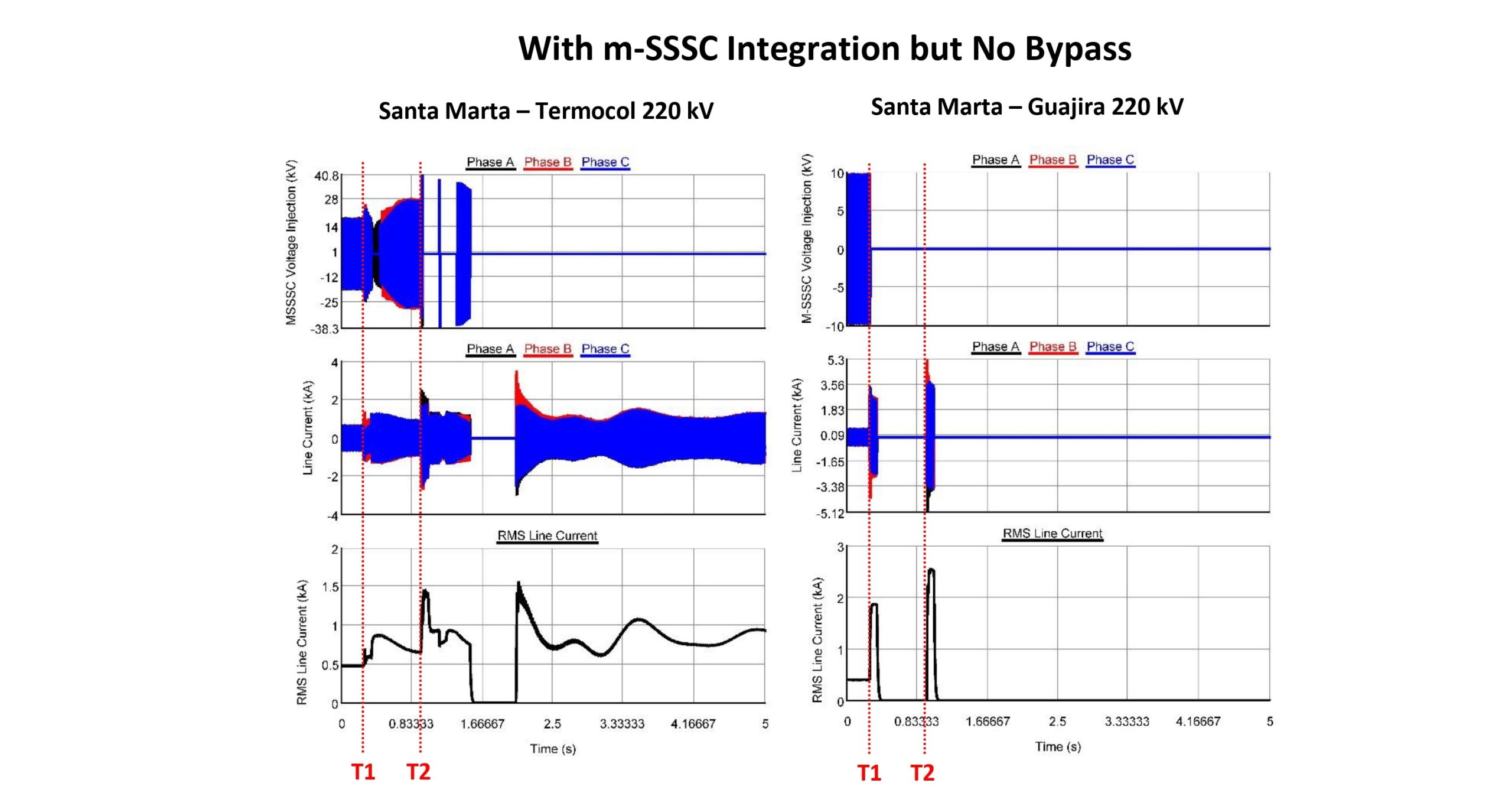
3. With m-SSSC integration and bypass functions enabled: M-SSSC’s fast-acting bypass features effectively controlled the fault, preventing grid instability and overloads.
- T1: during this time frame, the m-SSSCs swiftly enter bypass mode, a status they maintain as the line current diminishes and remains at zero. Simultaneously, the m-SSSCs on the healthy line engage bypass mode, triggered by the activation of the —a feature that activates the m-SSSC bypass when the current surpasses a preconfigured threshold, in this specific case it was set to More details about the LOR feature can be found here. Thereafter the healthy line’s m-SSSCs remain in bypass mode for an additional second following the last LOR signal, which occurred immediately after the fault reclosure.
- T2: During this particular time window, the relays on the faulty line make an attempt to reclose, leading to a momentary surge in current within both lines. However, this surge is short-lived, as the relays promptly retrigger. Notably, it’s worth mentioning that in this scenario, the protective relays on the healthy line remain steadfast, successfully avoiding any false triggers due to the fault on the other line, in accordance with the intended functionality. Concurrently, the m-SSSCs situated on the same healthy line remain in bypass mode, initially activated by the event in T1. But now, these m-SSSC have their internal timers resets once more due to the occurrence of the second Low Overcurrent event in T2. As a result, the m-SSSCs resume the injection function only in T3, 1.2 milliseconds following the most recent event.
- T3: The m-SSSCs on the healthy line actively employ inductive injection at a higher voltage than previously, effectively driving the current below the line current threshold.
- Steady-State: at this point, the line current is below its thermal limits.
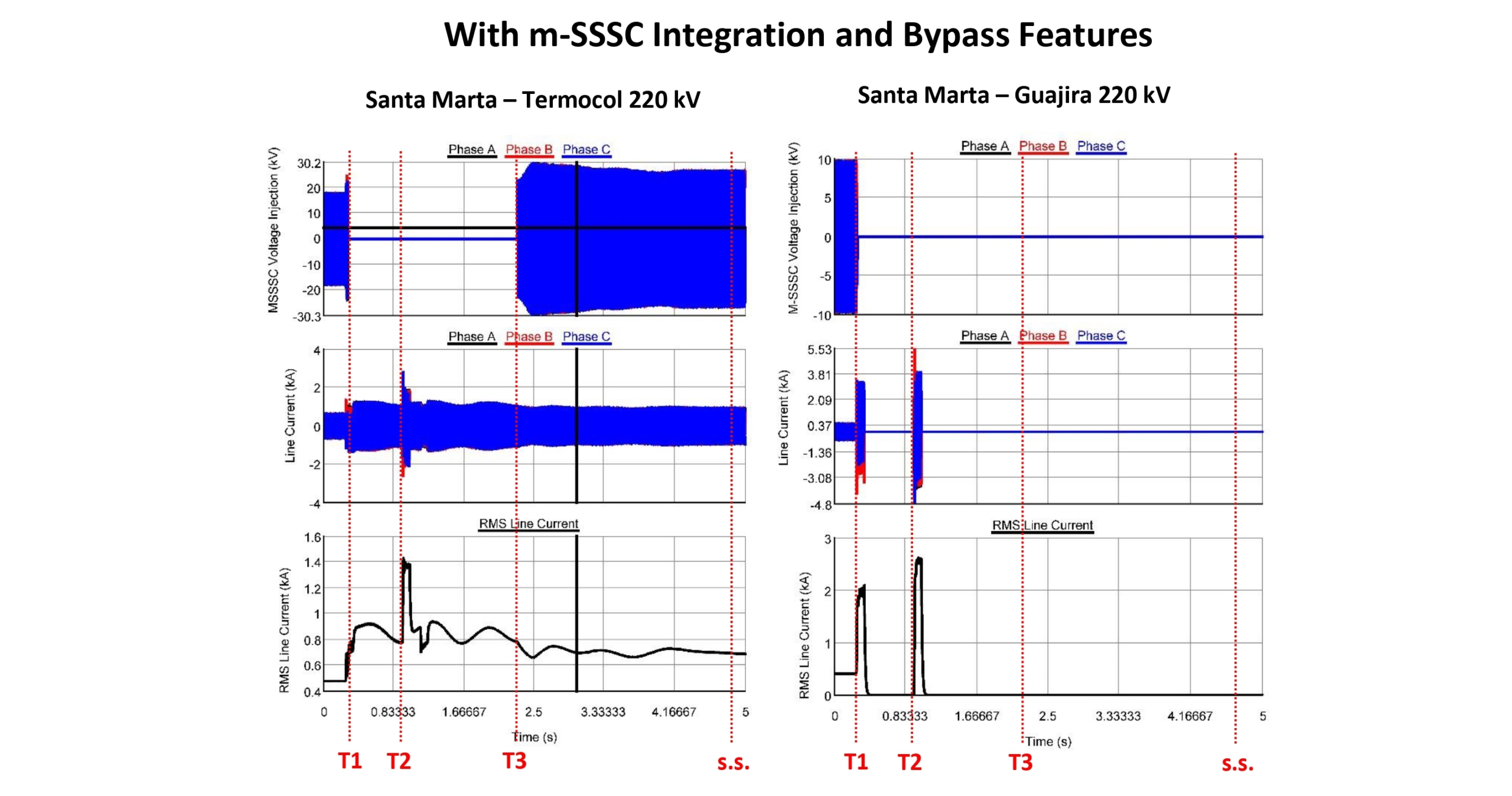
These results emphasize the importance of coordinated responses between m-SSSC devices and protection relays, which can be easily set up. While this study focused on the Colombian network, the methodology can be applied to other cases globally. By combining real-time simulations, hardware testing, and detailed power system modeling, Smart Wires
If you’d like to learn more about protection studies or any of our other Analytics services, check out the papers on this topic and get in touch with us:
Contributing expert
Pablo Macedo is a Power System Engineer at Smart Wires, where he leads the Hardware in the Loop Laboratory situated within Research Triangle Park. His core responsibilities encompass the development of advanced Hardware-in-the-Loop configurations for our product portfolio and the meticulous construction of protection-in-the-loop setups which are both used to run high-fidelity power system studies for Smart Wires’ customers. Pablo holds a Master’s degree in Electrical Engineering. Since joining Smart Wires in 2021, he has been an integral part of numerous high-impact projects.
For press related purposes, please contact us at marketing@smartwires.com.
Dive deeper into related content
Explore our products and services
Talk to our experts


